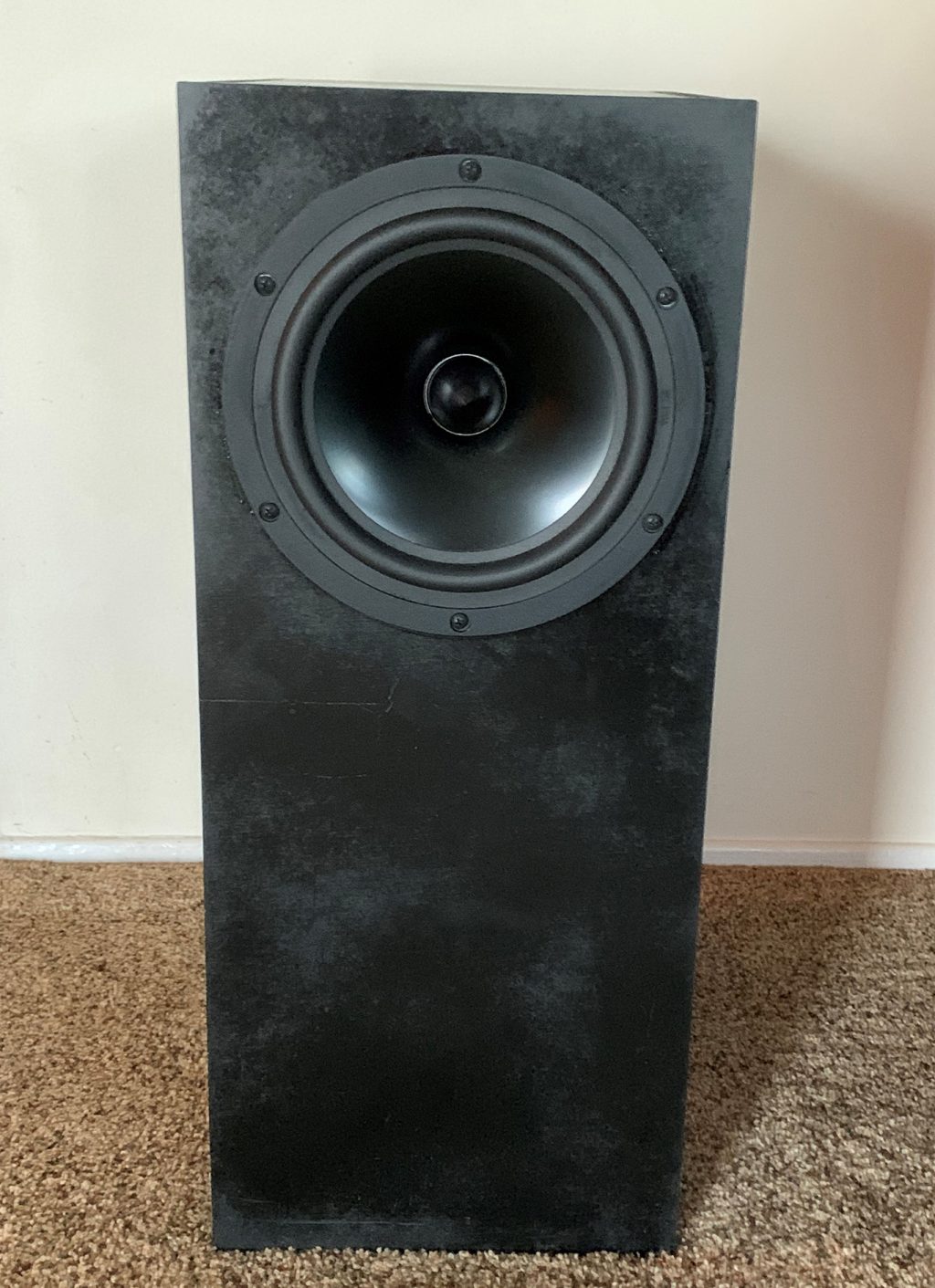
RS Bass Stand
Designer:
Winkleswizard
Project Category:
Subwoofers
Project Level:
Beginner
Project Time:
1-8 Hours
Project Cost:
$100 – $500
Project Description:
I needed to put my bookshelf speakers on stands and figured I could significantly enhance their bass for the same I would spend buying fancy stands for them.
Design Goals:
Wanted a driver that would act as a subwoofer for my bookshelf speakers without taking much space and still add serious bass. I recommend a subwoofer amp like the inexpensive Dayton APA-150. There is room for plate amp, but I like to keep anything that might rattle way from bass drivers.
Driver Selection:
Given the target cabinet size and desire for significant bass output with good sensitivity, decided to use the Dayton RS225-8 woofer. I have good experience with them and they are rugged enough to use without a grill too.
Enclosure Design:
Started with the high fidelity option in Bassbox Pro. For a 1.3 cubic foot cabinet, can do f3 in the upper 30s. I tuned a bit higher, as I liked the overall results. I maximized the use of MDF and minimized the number of cuts to make the design easier for newbies. See attachment for details.
Enclosure Assembly:
The enclosure is pretty straightforward and simple. For best stiffening, remember to glue in braces before to many parallel sides are attached. The original design (attached) uses remaining scrap pieces for braces. I later decided on a window pane style brace placed just below the woofer (see pictures). I left the original braces as it does not affect volume significantly.
Crossover Design:
This design uses the crossover in a standard subwoofer amplifier. If you do not have outputs to drive the subwoofer amplifier, can use something the Metra IBLOC01 to adapt speaker outputs to RCA.
Tips & Tricks:
To keep the design easy for the beginner, I designed to keep cuts to a minimum. Normally would double the front baffle thickness, but wanted to allow cutout to be done without need for a router.
If doing smaller braces, would place one across back just a couple of inches above the port. The other should go on the fron baffle just under the woofer.
Conclusion:
While still deciding on final finish, am very pleased with the overall performance of these bass stands. Without adding much added footprint, they really transform my bookshelf speakers into a much fuller listening experience.
About the Designer:
Have been an audio enthusiast for more than 40 years and have been designing subwoofers for about 30. I have built many DIY speaker designs and has been a great learning experience. When not listening or building, I help my wife (Winkle), family and others with their computer issues.
Project Parts List:
|
Part # |
Description |
Qty |
|
295-356 |
Dayton Audio RS225-8 8″ Reference Woofer |
2 |
|
300-812 |
Dayton Audio APA150 150W Power Amplifier |
1 |

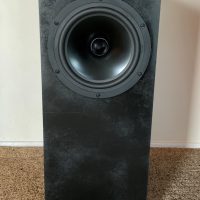
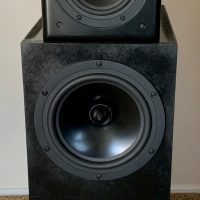
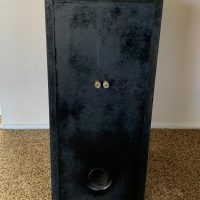
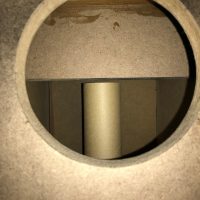
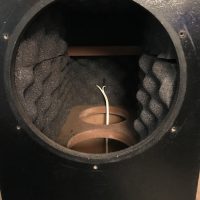
What a great design, where can I get the cut list? Is there a PDF of this project?